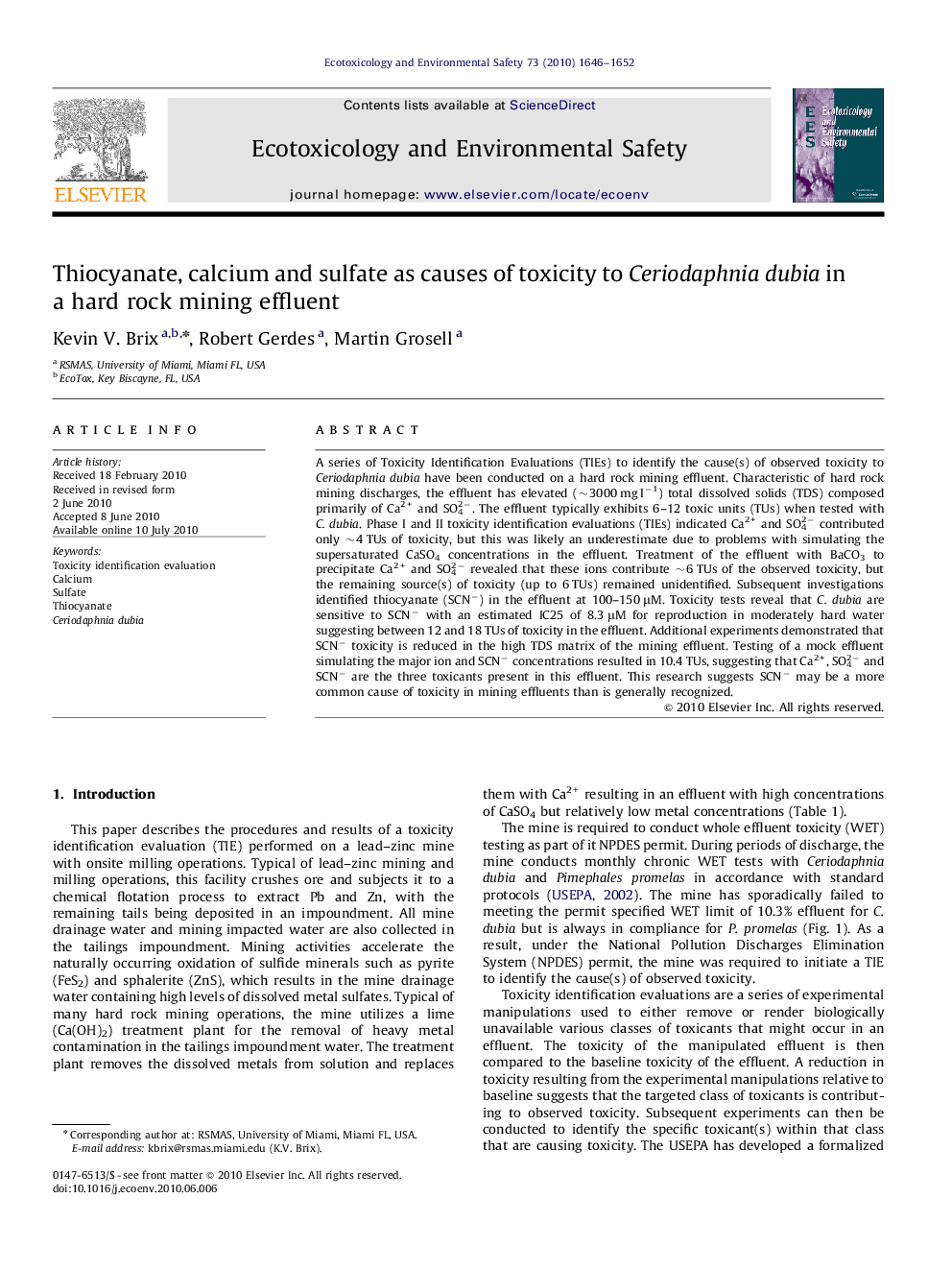| Article ID | Journal | Published Year | Pages | File Type |
|---|---|---|---|---|
| 4421719 | Ecotoxicology and Environmental Safety | 2010 | 7 Pages |
A series of Toxicity Identification Evaluations (TIEs) to identify the cause(s) of observed toxicity to Ceriodaphnia dubia have been conducted on a hard rock mining effluent. Characteristic of hard rock mining discharges, the effluent has elevated (∼3000 mg l−1) total dissolved solids (TDS) composed primarily of Ca2+ and SO42−. The effluent typically exhibits 6–12 toxic units (TUs) when tested with C. dubia. Phase I and II toxicity identification evaluations (TIEs) indicated Ca2+ and SO42− contributed only ∼4 TUs of toxicity, but this was likely an underestimate due to problems with simulating the supersaturated CaSO4 concentrations in the effluent. Treatment of the effluent with BaCO3 to precipitate Ca2+ and SO42− revealed that these ions contribute ∼6 TUs of the observed toxicity, but the remaining source(s) of toxicity (up to 6 TUs) remained unidentified. Subsequent investigations identified thiocyanate (SCN−) in the effluent at 100–150 μM. Toxicity tests reveal that C. dubia are sensitive to SCN− with an estimated IC25 of 8.3 μΜ for reproduction in moderately hard water suggesting between 12 and 18 TUs of toxicity in the effluent. Additional experiments demonstrated that SCN− toxicity is reduced in the high TDS matrix of the mining effluent. Testing of a mock effluent simulating the major ion and SCN− concentrations resulted in 10.4 TUs, suggesting that Ca2+, SO42− and SCN− are the three toxicants present in this effluent. This research suggests SCN− may be a more common cause of toxicity in mining effluents than is generally recognized.
